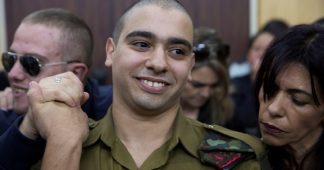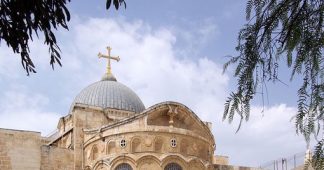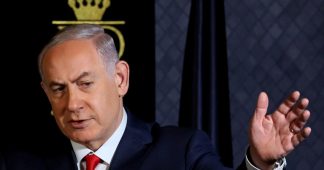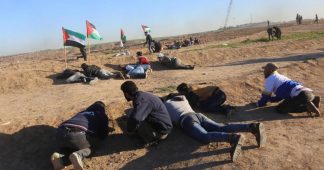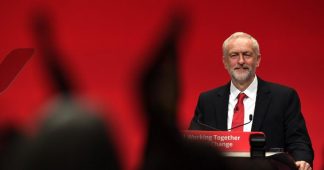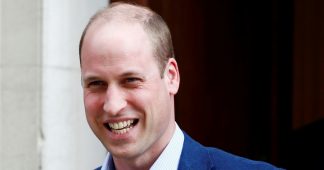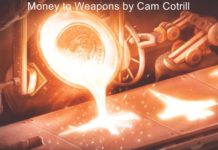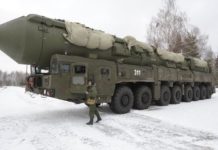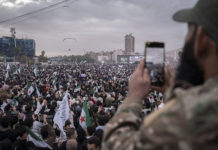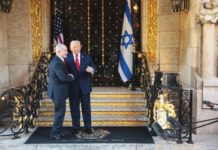It often seems that Israel’s actions in the West Bank are spurred by little more than a desire to compensate for lost opportunities and settle old scores, and Hebron is no exception writes Miko Peled.
by Miko Peled
December 19th, 2019
Hebron, Alkhalil, Palestine – Israel’s Defense Minister Naftali Bennett recently announced the approval of a new Jewish only neighborhood in the old section of the Palestinian city of Hebron. This new neighborhood, which lies in the heart of the Palestinian city, will include as many as seventy residential units. The move is not Israel’s first attempt to colonize Hebron. In 2017, the Israeli government approved the building of 31 housing units in a new settlement in the Old City on the now infamous Shuhada Street. According to a statement from the Defense Ministry, the construction project will double the number of Jewish residents in the city.
It often seems that Israel’s actions in the West Bank are spurred by little more than a desire to compensate for lost opportunities and settle old scores. The ancient town of Amwas in the Latrun region was leveled immediately after 1967 as revenge for their fierce fighting against invading Zionist militias in 1948. Hebron is no expectation. At the end of 1948, when Zionist authorities occupying Palestine were discussing whether or not to continue their conquest and ethnic cleansing campaign, the southern portion of what is now the West Bank, and the ancient Palestinian city of Hebron specifically, were on the table.
It was ultimately decided to leave the city in Arab hands, specifically under the control of the Kingdom of Jordan. David Ben-Gurion, the first Prime Minister of Israel, saw the move as a missed opportunity and said that the decision would be regretted for generations to come. Ben-Gurion called it “a cry for generations to come,” a phrase used by Israelis to describe missed opportunities.
Ben-Gurion was correct in his assessment. When Israel took Hebron only twenty years later, along with the rest of the West Bank, it was no longer possible to forcibly remove the population as it had done in other cities and towns conquered in 1948. Furthermore, unlike cities like Yafa, Nasra, Tabariya and other Palestinian cities that were taken in 1948, Israel’s sovereignty over the West Bank remains questionable to this day, a reality that forces in Israel are working hard to change.
The “cleansing” of Hebron
Hebron is one of the oldest and continuously inhabited cities in the world and even if one were to limit themselves to the last century, countless pages would be needed to recount its rich history. It is the largest of the Palestinian cities in the West Bank and an important economic center. The city has multiple markets, three universities and one academic institute (Hebron University, Palestine Polytechnic University, Al-Quds Open University and the Al-Aroub Institute).
The Old City of Hebron, aside from serving as a beautiful example of ancient Palestinian history, is rife with religious significance. According to both Jewish and Muslim traditions, the Patriarch Abraham and his wife Sarah are buried in Hebron in the Tomb of the Patriarch, known to Muslims as the Ibrahimi Mosque (Mosque of Abraham).
A short recounting of events from 1967 until today reveals a slow ethnic cleansing of Hebron’s Old City by Israeli authorities and its repopulation by Jewish settlers. This take over was carried out by allowing violent gangs of extremist Jewish settlers to invade the city and terrorize its native Palestinian population, all under the protection of the Israeli army. This is a tactic used by Israel throughout Palestine. Send in fanatic, armed settlers to terrorize Palestinians in a particular town or village, allow them to settle, call in the army to protect them and before you know it, you have another Israeli town or city in its place.
In 1968, during the Jewish holiday of Passover, a group of Israeli settlers led by a fanatic Rabbi called Moshe Levinger rented a hotel room in Hebron claiming they wanted to celebrate the holiday there. When the festivities concluded, they refused to leave and declared that they were taking over the place. While the Israeli government initially showed some objection to the hostile takeover, Israeli cabinet ministers gave the settlers their full support, and of course, the settlers enjoyed the protection of the Israeli army. After a few months, the group agreed to leave the hotel in exchange for the establishment of a settlement on land confiscated by Israeli authorities on the outskirts of Hebron. Today, that settlement is the city of Kiryat Arba where close to 7,500 Israeli settlers reside. It is known as a hotbed of racist, violent gangs of settlers that regularly and freely terrorize neighboring Palestinians.
The Tel Rumeida takeover
For decades, violent settlers protected by the Israeli army have been invading the old city of Hebron in an attempt to force out Palestinians. The Beit Hadassah settlement, Beit Romano, Avraham Avinu, Ramat Yishai, and others, were all established by radical Israeli settlers with the full support of multiple Israeli governments. Ramat Yishai is the name given by settlers to Tel Rumeida, where approximately ten housing units were built under the pretense of fulfilling “security needs.”
Standing at Tel Rumeida, a hill covered in ancient olive trees some distance away from the old city, the view is breathtaking at all hours of the day and night. Choice real estate as it is, this hill is constantly invaded by violent Israeli settlers under the protection of the Israeli military who harass local residents. The most notorious settler, Baruch Marzel, lives in a house on the hill guarded by a full-time army post manned by IDF soldiers.
Marzel resides just behind a house used by Youth Against Settlements (YAS), a local, extremely effective, and well-organized grassroots organization. The house in which YAS operates was nearly taken over by settler gangs when, in an unprecedented move, Issa Amro, a local leader and the head of YAS, was able to stop them by renting the home from its Palestinian owner. It was on a Tel Rumeida street that Israeli soldier Elor Azaria shot and fatally wounded a Palestinian in the head as he lay on the ground. Azaria was celebrated as a hero in Israel.
A byproduct of the Oslo Accords
The 1997 Hebron protocol, a byproduct of the Oslo Accords, divides Hebron into two parts, H1 and H2. H1 is the largest portion of the city and comprises the new city officially under the control of the Palestinian Authority. H2 includes the Old City, which has its own commercial center. Of the 220,000 Palestinians in Hebron, 35,000 live in H2 under full-time Israeli military control and under near-constant harassment and attack from H2’s 600-800 Jewish settlers. Palestinians residents of Hebron have to be registered and will not be let into the city without their registration number.
In 1994, in what became known as the Ibrahimi Mosque massacre, an Israeli-American army doctor living in Kiryat Arba shot and killed 29 Palestinians, wounding more than 100 others. The massacre, and the protests which followed, led the Israeli army to shutter 1,800 Palestinian shops and more than 1,000 housing units. All the main markets were closed and Hebron’s Old City main street, Shuhada Street, which has connected the northern and southern parts of the city for generations, was closed to Palestinians. In other words, the very heart of Hebron’s Old City was now inaccessible to its own Palestinian residents.
The Jewish-only settlements that dot Hebron’s rolling hills do not rely on local commerce for their resources, instead, they are all connected to the settlement of Kiryat Arba by a network of Jewish-only roads and infructure. Kiryat Arba serves as a sort of hub connecting Hebron’s various colonies. The plan is to connect the settlements in a line running through Shuhada Street, past the Ibrahimi Mosque, and up to Kiryat Arba. That settlement will then be connected to the settlement in Tel Rumeida, closing off the area to Palestinians and taking over all Hebron’s Old City, effectively expelling Palestinian residents.
Hebron is a microcosm of the rest of Palestine and unless people of conscience around the world act and adopt the call for Boycott, Divestment, and Sanctions (BDS) against the Israeli government, the story of Hebron will soon be the story of all of Jerusalem and the rest of historic Palestine.
Feature photo | Jewish settlers jump on a trampoline as an Israeli solider stands guard in a Jewish-only settlement in the occupied West Bank city of Hebron, March 7, 2019. Ariel Schalit | AP
* Miko Peled is an author and human rights activist born in Jerusalem. He is the author of “The General’s Son. Journey of an Israeli in Palestine,” and “Injustice, the Story of the Holy Land Foundation Five.”
Published at www.mintpressnews.com/

